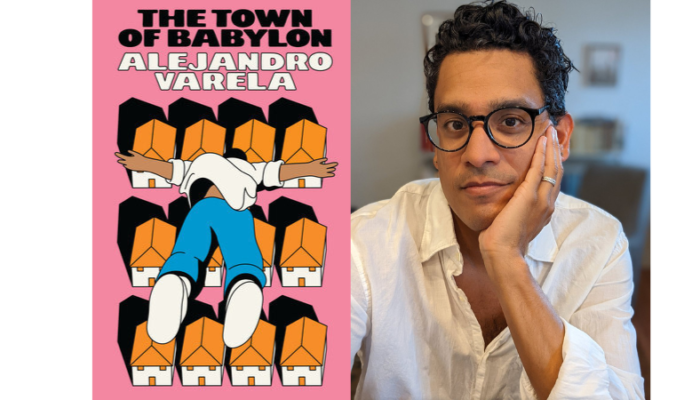By Scott Dievendorf, Fiction Editor
It’s a familiar narrative—our protagonist plunges into the depths of hell, witnesses a world unparalleled to that on earth (horrifying, challenging, against common virtue), undergoes transformation, and returns to the surface better for the excursion. How that character reemerges in the various iterations of this story, however, is what makes all the difference. Since the plunge is inherently destabilizing, the story tends to take two routes: further into the unsettling depths or back to the comforts of familiar, steady terrain. Through the latter, corrective turn, we learn how society views its derelicts, we are taught to better judge and condemn, and we are warned into a more conforming worldview. Narratives that take the turn end up reinforcing the domineering values of the mainland from which these stories were meant to depart.
To leave the mainland, one must cross its borders, and in the case of narrative, these borders are constructed by the traditional values of the culture. Considering how staunch social strictures can be, a story doesn’t have to be radical to accomplish this. Playing with traditional gender norms, for example, can be enough to transgress cultural models of masculinity and femininity. Comedy and horror are two genres that exemplify this narrative mode, as such violation is wedded to their success. Comedy gets its laughs from venturing into socially sensitive or taboo realms. Horror provokes fear by penetrating a perceived security of social order.
One of the most touted transgressive films, Night of the Living Dead (1968), for example, presented a black protagonist wielding power at a time when the civil rights movement was challenging conventional notions of race. It’s not lost on critics that white authority murdered Ben in the final frame. For a film released the same year as MLK’s assassination, the story became transgressive the moment Ben took power.
Horror allows us to acknowledge aspects of our world that we aren’t to discuss. A wave of movies in the sixties and seventies assaulted patriarchy from multiple angles. Polanski’s Rosemary’s Baby (1968) exemplifies this trend, as it ridicules the myth of female hysteria. The violation happens when the story departs from a “conventional” image of American life and leads the audience into its ideological recesses. We’re first introduced to a happy couple buying an apartment in New York—their future is bright, they’re settling down and want a baby, doing everything a successful couple is expected to do. As the story develops, the audience is guided by Rosemary’s paranoia. Our identification with her allows us to see her husband, her doctor, and her neighbors (a neat stand-in for society) attempt to manipulate her and her reproductive powers, which gives us a mirror into the patriarchal workings of our own world. At the core, the community (coven) is utilizing charges of hysteria to convince Rosemary she’s crazy while attempting to control her body and mind.
Today, a fringe of filmmakers working under the moniker of New French Extremity (though not all are French) is going as far as possible to explore similar subject matter. Most obvious is the aptly titled Frontière(s) (2007). This sendup to The Texas Chainsaw Massacre follows four Muslim teens as they flee to the countryside amidst riots responding to the election of an extreme right government. In the countryside, they end up at an inn run by a clan of neo-Nazis. The ordeal of fighting off the Nazis is juxtaposed against the turmoil in the city, highlighting a not-too-subtle political struggle with an eye towards xenophobia and racism.
– As a disclaimer, it’s worth mentioning that narrative isn’t an ideal example of “pure” social critique. It isn’t as lucid in its criticism as a piece of social inquiry might be. For example, while condemning patriarchal ideology, Polanski is male and, like many other filmmakers, uses the stupid contradiction of representing violence against women to criticize violence against women.-
By talking about what we aren’t to talk about, horror finds itself performing its critique at the site of trauma. The territory of transgression is murky, as the narrative wades through layers of violation. But endemic to such a narrative is a violation of dominant ideology.
Oft cited as a liberating means to discuss oppression, comedy sustains its credibility as a transgressive mode by remarking upon social topics that are hushed in traditional forms. It’s the reason The Daily Show can get away with doing what news networks are too sheepish to try. In a recent episode, correspondent Jessica Williams parodied the trite Black Friday preparedness news cycle by highlighting racial profiling, “There is one other way to avoid getting racially profiled: cover your skin.” Comedy creates a different expectation for how far the audience will travel outside of genteel culture.
The transgressive plunge in comedy and horror is destabilizing. Its violation of social boundaries brings it into unsettling territory, and there is a tendency for the narrative to take a corrective route back to the status quo in order to stabilize itself. Through this turn, the narrative will attempt to correct the transgressive strain within it by bringing itself back to the more familiar area of dominant ideology. It therefore assimilates the subversive element into a mainstream model, nullifying the power of critique and reasserting a conservative message.
The corrective mode teaches us how and where to cast our judgments and reminds us how to best conform to social expectations. In this year’s road comedy We’re the Millers (2013), for example, society’s derelicts fake a model American family to smuggle pot into the country. The film’s failure to transgress makes it a clear example of a corrective narrative and the humor inevitably hinges on this mode.
At its base, the film communicates what it deems a delinquent member of society. The “father” is a white drug dealer played by Jason Sudeikis. Multiple jokes attempt to profit on a false irony surrounding his race, compounded by an all-American Ed Helms as head of the drug empire, leeching off Breaking Bad’s racist premise. The sicker joke here is that, while black and Latino men are incarcerated on a mass scale in the racially motivated War on Drugs, peddling and consuming drugs is comparable across races. The “mother” is a stripper played by Jennifer Aniston, reasserting that female sexuality is misfit according to dominant culture. This too is compounded as Aniston quits when her boss insists she have sex with clients, while her coworker apathetically agrees for the punch line. The “children” are a promiscuous runaway played by Emma Roberts and a male virgin played by Will Poulter—this juxtaposition highlights the double standard surrounding sexuality and gender. It’s as misfit for a girl to be promiscuous as it is for a boy to be sexless.
Ultimately, the narrative corrects itself by suppressing its transgressive strain. The film climaxes with a turn to normalcy when the family that has long played foil to the Millers proves triumphant—the patriarch is revealed to be a DEA agent that destroys the antagonistic threat (Mexican drug dealers entrapped by a stereotyped othering) and employs Sudeikis to take down Helms’ drug ring. Dominant culture reigns supreme. It fully corrects as the Millers settle into dominant ideology: joined together as a witness protection family behind their very own white picket fence.
A horror equivalent is James Wan’s The Conjuring (2013). Though all of his films are corrective, The Conjuring is most repugnant because its formulaic haunting devolves into a sexist Amityville rip-off. It ends when the possessed all-American mother is reminded of her maternal spirit, which vanquishes the witch-demon and returns her to her loving self. The last frame is an explicit warning against Satan worship, cautioning the audience not to welcome evil lest a similar fate befall them—this isn’t interpretation; a title card appears in warning. This message is easy to translate: don’t stray from social order; avoid the temptations of transgression. Return to earth, hell is too troubling. Considering that both the movie and devil are fiction, Wan’s angelic moral authority is derived from values of dominant ideology, which explains his misogynistic sermonizing. Simply put, religious rhetoric is often used to pigeonhole gestures deemed transgressive by dominant culture, i.e. homosexuality as sin.
What these corrective narratives inevitably convey is that the seductions of transgression are dangerous and that it’s safer to stay in the familiar territory of dominant ideology. They delve past the confines of social strictures but then turn around to reinforce those very boundaries. And while corrective narratives are damaging in that they reassert the power of oft-oppressive values, they can also be guides, mapping out the reaches of dominant ideology and, in some instances, criticizing the culture itself by alerting the audience of its own absurdity—after all, by knowing how dominant ideology views the derelict, we can dismantle its restrictions on identity. Additionally, as the narrative is corrected, something damning is revealed about the status quo and its methods to correct.
Ultimately, a transgressive narrative is critically effective because it reconfigures the culture by daring to violate its restrictive order. However, the true iconoclastic text is one that destabilizes the status quo by leaving its fictional world in disrepair or transfigures the character, bringing them into an unfamiliar state. Traditional narratives transform the character through growth. The transfiguring quality of a transgressive narrative leaves the character amidst the ruins of a previous self, uncertain of identity, the future, their values, or the values of the world in which they live. A story reconfigures its fictional world to teach us something about our own.
The greatest critical worth arises when a transgressive narrative can deconstruct institutions and values into an unrecognizable state, calling on the imagination of the audience to build anew, towards a more just society opposite the vulnerable one on screen. When one can reemerge from the depths, back on the mainland, so changed by the excursion that the future is open and ready for a new form of life.





